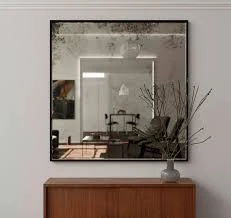

Understanding Reflective Glass Properties, Uses, and Benefits
Reflective glass, often referred to as mirrored or tinted glass, has become increasingly popular in modern architecture and design. This specialized glass offers unique properties that make it an excellent choice for various applications, from residential buildings to commercial spaces. In this article, we will explore what reflective glass is, its properties, its uses, and the benefits it brings to both architects and building occupants.
What is Reflective Glass?
Reflective glass is a type of glass that has a thin metallic coating applied to one of its surfaces. This coating reflects a significant portion of light while allowing some to pass through. The reflective quality can range from slight tinting to nearly full mirroring, depending on the thickness and type of coating used. Common materials used for the coatings include silver, aluminum, and a range of other metals. The result not only enhances privacy but also improves energy efficiency.
Properties of Reflective Glass
1. Light Reflection and Transmission Reflective glass is designed to reflect sunlight, thereby reducing glare within the building. It also allows varying degrees of natural light transmission, creating a balance between illumination and comfort.
2. Energy Efficiency One of the most significant advantages of reflective glass is its ability to reduce heat gain from solar radiation. By reflecting a large percentage of infrared and ultraviolet light, it helps maintain cooler indoor temperatures, which can lead to lower energy costs for air conditioning.
3. UV Protection The metallic coating on reflective glass can block a considerable amount of harmful UV rays, protecting both interior furnishings and occupants from potential damage.
4. Aesthetic Appeal The sleek, modern look of reflective glass can enhance the architectural beauty of a structure. It creates a visually interesting facade, often reflecting the surrounding environment and changing with the light throughout the day.
5. Privacy Reflective glass provides privacy during daylight hours without sacrificing natural light. This is particularly beneficial for commercial buildings and offices.
Uses of Reflective Glass

Reflective glass can be utilized in various settings
1. Commercial Buildings It is commonly used in skyscrapers and office buildings, allowing for expansive views while minimizing glare. This is crucial in urban environments where buildings are closely packed together.
2. Residential Spaces Homeowners increasingly opt for reflective glass for modern designs, particularly in large windows and sliding doors. It offers privacy while enhancing the home's aesthetic value.
3. Automotive Applications Reflective glass is also used in vehicle windows to reduce heat and glare, improving comfort for passengers and drivers alike.
4. Glass Facades Many architects use reflective glass to create striking facades that integrate harmoniously with the surroundings. The glass can reflect trees, sky, and other buildings, creating a dynamic visual experience.
Benefits of Reflective Glass
The advantages of reflective glass extend beyond visual appeal.
- Energy Savings By reducing heat gain, reflective glass can lead to significant energy savings. Lower energy consumption not only decreases utility costs but also contributes to a reduced carbon footprint.
- Enhanced Comfort The control over glare and temperature creates a more comfortable indoor environment, increasing productivity in workspaces and relaxation in homes.
- Durability Reflective glass is typically treated to be more durable and scratch-resistant than standard glass, contributing to its longevity.
In conclusion, reflective glass is a versatile material that offers numerous benefits in terms of energy efficiency, aesthetics, and functionality. As cities evolve and the demand for innovative materials grows, reflective glass will continue to play a vital role in modern architecture and design, harmonizing practicality with style.